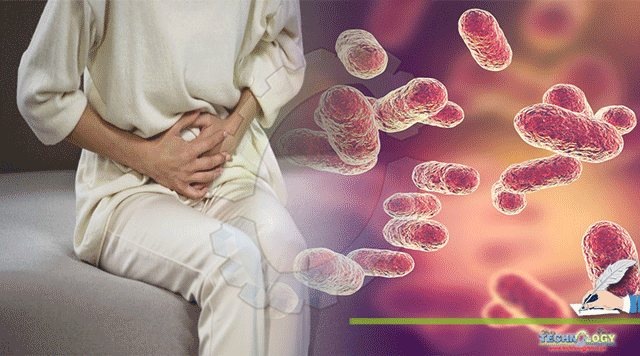Recent DNA Sequencing Analysis Describe The Most Dominant Species Of Lactobacillus In The Human Vaginal Microbiota.

Introduction
Microorganisms which present in the vagina or vaginal cavity is known as vaginal microbiota. These microorganisms are part of the normal human flora and have significant effects on the health of women’s. Mainly bacteria that protect from the infection through pathogenic species are the lactobacillus like lactic acid and L.crispatus. Lactobacillus bacteria seems frequently found in the vaginal mucosa.
Discovered by:
In 1892A German gynecologist Albert Doderlein discovered this microorganism.
Composition and role of the vaginal microbiota
95% of lactobacilli are present in the vaginal microbiota. These species making a biofilm on the vaginal mucosa surface that limits the attachments pathogenic microorganism. These both are mainly responsible for urogenital infections. The human vaginal cavity has acidic environment having a pH between 4 and 5. Changed pH creates a good environment for pathogenic microorganisms attack. pH helps to maintain the acidity of the vaginal environment helps to produce a bacteriostatic effect andhydrogen peroxide is produced that aids to inhibit the anaerobic microorganisms that stimulate local immune defences.
Involved Factors:
9% of human microbiota is found in the urogenital tract. In the he reproductive life changes in hormonal balance leads to fluctuate the composition of the vaginal microbiota . Several physiological stimuli change flora like hormone imbalance, age and pregnancy. Menstrual cycle, bacterial or viral infection and use of antibiotics effects the tract. 50 different species of microbiota in which lactobacilli are most common in healthy women’s. Microbiota compositional changes leads to various complications.
Environmental factors and genetic expression involvement
In the activation of environmental and genetic expression emerging modulator is the microbiome. Several environmental and genetic risk factors involved in endometrial cancer. In the activation of environmental and genetic expression emerging modulator is the microbiome. Investigation is started to find the critical role of uterine microbiota in endometrial cancer and its composition.
Two Hypotheses regarding the involved mechanism
Evolutionary mechanism involved in vaginal microbiome is assisted by two hypotheses;
- “Disease risk hypothesis”
- “Obstetric protection hypothesis”
Both hypothesis describes the effect of protective Lactobacillus species. Humans are more prone to sexually transmitted diseases. A higher risk of parturition and pregnancy-associated microbial complications.
Protective Specie in Vagina
A lot of protective Lactobacillus species have dominated most of the reproductive age women’s vaginal microbiota. Recent DNA Sequencing Analysis Describe The Most Dominant Species Of Lactobacillus In The Human Vaginal Microbiota.
Pathogenic species in vagina
Anaerobes include Gardnerella, Atopobium, Mobiluncus, Prevotella, Streptococcus, Ureaplasma and Megasphaera can cause infectious diseases like bacterial vaginosis. Lactobacilli bacterial vaginosis (BV) have defensive mechanism . Vaginal microbiome into five community state types as with CSTI, II, III, V and CSTIV.
Pathology and inflammation of uterus and vagina in association to the microbiome
Vaginal stress and Neural control:
The most discussing subject is the impacts of stress on vaginal immunity. Hypothalamic corticotrophin-releasing hormone (CRH) excretion and hypothalamic pituitary adrenal (HPA) is the stress-related stimulation. These hormones involves in the damaging of the immune response. The activations of these hormones release different cytokines that may reduce the number of lactobacilli and cause vulvo-vaginal infection. Anti-inflammatory decrease activities and reduced the production of lactic acid by damaged vaginal epithelial. Many environmental and genetic risk factors involved in endometrial cancer.
Most common infections specie in vagina:
Bacterial vaginosis (BV) is the most common infection in premenopausal women’s. Many gram-positive, gram-negative and pathogenic aerobes present in vagina. Metronidazole and clindamycin used to treat . This type of treatment cannot restore the lactobacilli population. lactobacilli strains. disrupted the bacterial vaginosis. Yeast biofilms inhibits the pathogen growth.
Contribution of these microbiomes in vaginal and uterine biochemistry and environment
Recent studies revealed that the female genital tract has a significant immune ability. It plays role in the regulation of vaginal microbes. It is investigated that in female vagina antimicrobial component of the innate immune system are present. some are like lactoferrin cytokines, Toll-like receptors and secretory leukocyte protease inhibitors and surfactant protein are present (Linhares, I.M et al., 2011)
Role of immunoglobulins
Antimicrobial immunoglobulins produced in the lower portion of the female genital tract. These secretion diffuse in the vaginal secretions. Estrogen influence the immune response of the vagina. Acidic pH of the vagina are the major components of the antimicrobial defence system in vaginal fluid.
Conclusion
Healthy vaginal environment needs Optimum stability of the host-microbial interaction . Disrupted balance and some internal and external factors it may lead to major complications. Dysbiosis is result of alterations in homeostatic state. Some consequences of the reproductive system remain complicated. This condition may lead to premature labor and delivery and early pregnancy loss. Disturbed microbiome leads to Inflammation of gestational tissue.
- External and internal factors:
Many external and internal factors are responsible for the variation of microbiota. These could be smoking, douching, sexual intercourse and use of contraceptive etc. Endometrial cancer is produced by hormonal imbalance and disruption of the vaginal microbiome. Aerobic Vaginitis is immunological disorder . It is the influence of aerobic microbiota like Streptococcus agalactiae and E.coli. We must need to improve the therapeutic level of BV and dysbiosis.
- pH effect on specie:
The pH of vaginal fluid is the key regulatory component in the maintenance of the vaginal flora composition. Lactobacillus is the prominent element. Vaginal acidity is important for regular mucosal functioning and for pathogenic inhibition. Vaginal Immune system is key regulator of microflora.